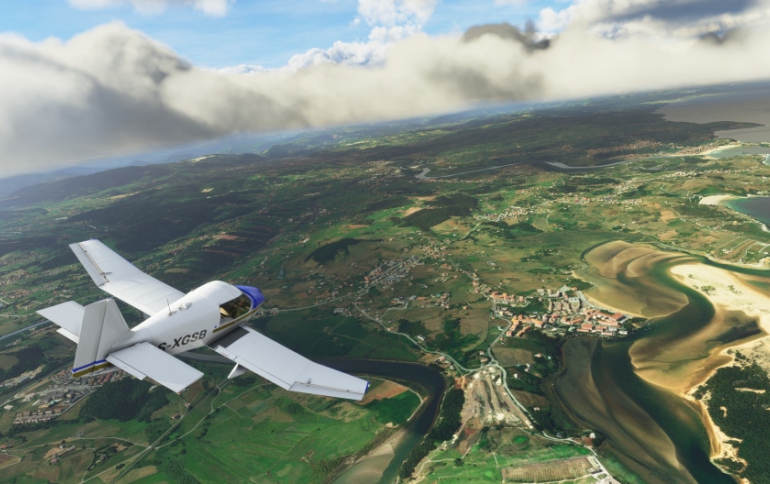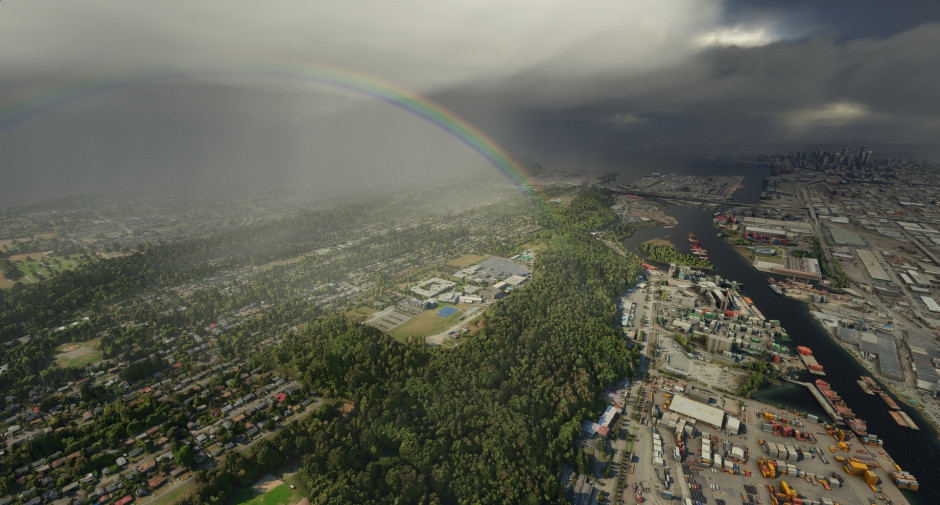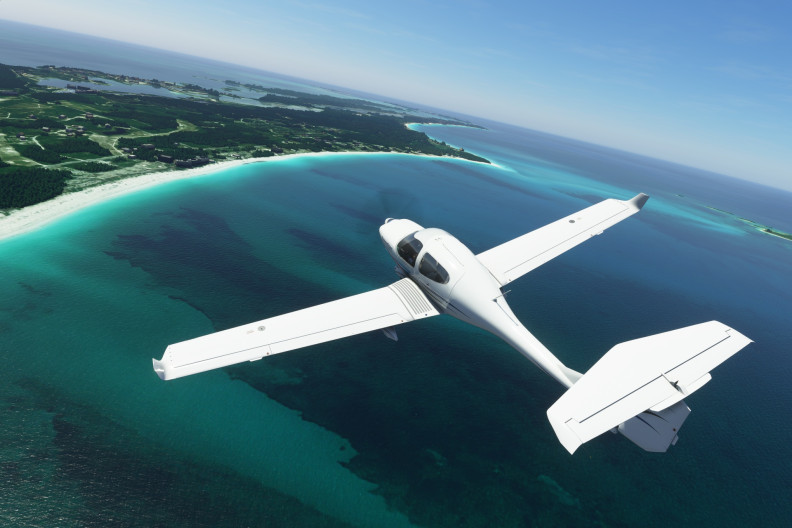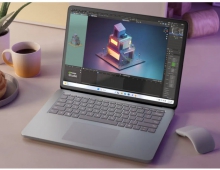
New Microsoft Flight Simulator Is More Realistic and Accurate
The new Microsoft Flight Simulator is coming in 2020 and promises to offer fine details of our world, accurate that Visual Flight Rules (VFR) and more.
If you have been “flying” using any of the previous vesion of the game, you have probably seen your hometown morph from polygon squares to ground mesh to pixelated landscapes. The new version of the MFS promises to provide you accurate representations of your actual house, or the the beach down the street you would’d take your dog to.
Microsoft's team used a combination of global satellite data and aerial imagery from Bing, and the power of Azure Cloud to bring a visual representation of the entire planet Earth to life (2 petabytes of data, to be precise). In addition, the procedural techniques are using machine learning algorithms developed by the team that defines where to generate trees, grass, terrain surfaces, and other elements based on world data.
The new simulator is also so accurate that Visual Flight Rules (VFR) are totally applicable here. Meaning, the world is recreated so accurately that you, as a pilot, can navigate visually by following known roads, rivers, and lakes to find your way. This is all reproduced on a global scale, allowing you to see the world from the comfort of your virtual cockpit.

Satellite data is one thing, but it’s Microsoft's partnership with Asobo Studio that really helps bring Microsoft Flight Simulator to life. The aforementioned machine learning techniques that they developed help to augment Bing Maps and the power of Azure to detect elements like the location of trees in the world, add missing buildings, account for rooftop colors; all by examining data from Bing that then by using Azure to stream the data in real-time into Microsoft Flight Simulator to make what you’re seeing and flying over as accurate as possible. This means that while you’re flying, data will stream to your PC from the cloud to help fill in all the ground, sky, and weather details.

The platform will adapt to your available bandwidth. So, if you have a fast internet connection, the data will stream and update much faster and closer to real-time. But if your bandwidth is low, it automatically adjusts the amount of data downloaded to your machine. You will also have to option to pre-download sections you intend to fly over ahead of time. So, for example, if you’re plotting a route from Seattle to San Francisco, you’ll be able to download (pre cache) all that data before you take off. Then, Asobo’s techniques will go ahead and procedurally generate all the ground detail like blades of grass, waves influenced by the wind, night lights on the roads, building details.
The sky also seems to be very impressive in MFS. Microsoft says that all the fine details are put into atmospheric simulation, like the way clouds move and react to mountains, valleys, and hills. Or how fog generates to create thick, dense layers for you to navigate through.

There’s a number of other finer details that help create the sky in Microsoft Flight Simulator, like particles, pollution, shadows from clouds on the grounde. It can even render rainbows since elements like humidity, direction of the sun, etc. are all physically based.
And then there’s the rain, which too has its own physical properties in-game and react to your aircraft depending how you’re “cutting” through it. So, for example, if you’re in place on the tarmac, you’ll see thicker drops stick to your windshield and then slowly drip off; pick up speed and you’ll have them slide and shape to the windshield itself.

Other fine elements help bring the sky to life, like the day-night cycle that factors everything from the light of the Sun to the intensity of stars and city lights. They all help to give a realistic representation in-game allowing for VFR by night as well.
Simmers can choose to experience real-time weather in whatever location they are flying, and users can also customize the weather however they want, whenever they want, through an on-screen drop-down tool. So, if you want to say, fly through a clear blue sky one minute and then try navigating through that thunderstorm that’s currently over your house, it can all be adjusted on the fly without having to exit to a game menu.
The simulator itself will utilize a lot of legacy code from previous versions of Microsoft Flight Simulator. Naturally, there will be several tweaks to take advantage of today’s more powerful computers. So, things like in-game physics are new and rewritten from the old code, along with dynamic friction and world elements like sloped runaways are all now possible in-game. There will also be “legacy” settings if you prefer how aircraft performed in prior versions of MSFS.
Other changes to the core physics engine and aerodynamics have been rewritten as well. The air isn’t just some vacuum that you’ll fly through. Microsoft promised that you’ll feel air as your aircraft lifts, drags, or slides as you come in contact with it, accounting for elements like ice on the wings, pollution particles, or how wind moves through buildings or across tree tops. The aircraft will respond accurately to all these now. And when you touchdown on the ground, the friction elements of rubber to asphalt have also been improved, giving you a truer feeling of what it’s like to “stick” a landing.
Most importantly, each piece of the plane has its own dynamic and physical characteristics. From the way air travels over the wings, to the shape of the cockpit glass, to the flaps, they all have their own specific aerodynamic characteristics to account for lift and drag. All of this gives you a craft that you’re going to feel pushing you left and right, up and down, all with a realistic representation of how it would react in real life.
The cockpits have been all created with high-fidelity, 4K materials. The interior of the cockpit also responds to how light shines through the glass to have an effect on the appearance of instruments, sometimes making them harder to read based on the position of the sun in relation to your aircraft. All the instruments now have their own physical characteristics (needles, etc.) and animated correctly while in-game, in addition to the implementation of glass cockpits with interactive touchscreens for precise navigation.
The interactive checklist feature will be also available for those that want to learn what every single dial and switch does in the cockpit. And these checklists apply for each cockpit variant you hop into (not every switch is in the same place, for example).
The head in the cockpit will no longer be just a static viewpoint; the pilot’s head will now tilt and move in relation to how your aircraft is flying, giving an authentic representation of being in the plane.
There are three key areas that the team behind Microsoft Flight Simulator intend to nail: realism, accuracy, and authenticity of flight.
The Microsoft Flight Simulator launches on the Microsoft Store and with Xbox Game Pass for PC next year.





















